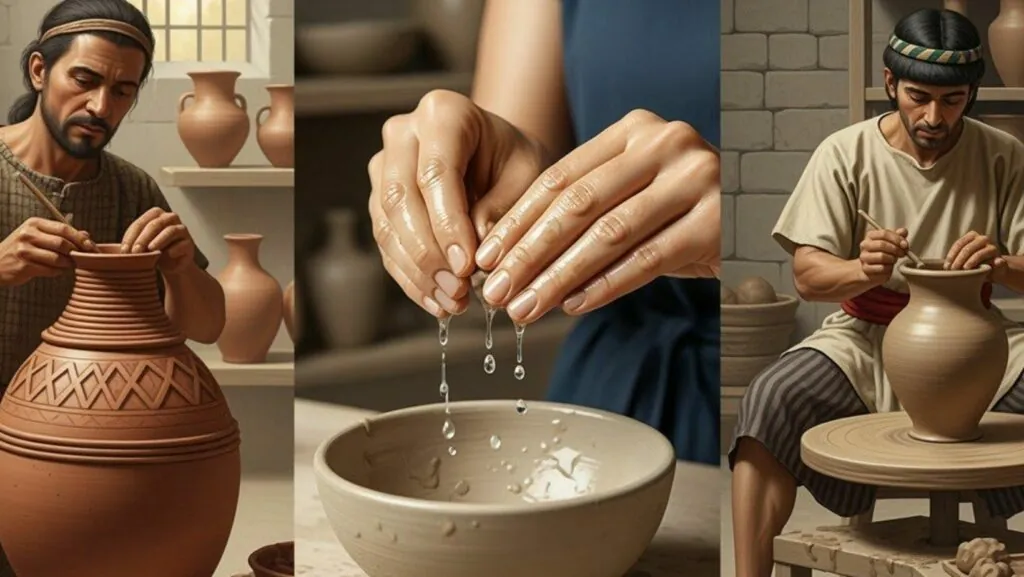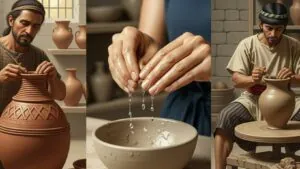Table of Contents
ToggleThe ancient art of pottery has been an important part of human life for thousands of years. From simple clay pots to detailed pieces of porcelain, pottery has helped meet everyday needs and shown off the creativity of different cultures. Pottery is one of the first and longest-lasting crafts invented by people, stretching back to the earliest days of settled life.
Making and using pottery still captures people’s interest, giving us a real link to our ancestors and offering endless ways to be creative. An example of this lasting craft is the popularity of Polish Pottery, which shows how old techniques can blend with modern styles to stay relevant today.
People like pottery because it is both useful and meaningful. Clay pots can last much longer than things made of wood or cloth, so they are a big help to archaeologists studying ancient lives. These lasting objects have helped us learn about lost cultures.
The story of pottery is full of ways people have adapted, grown artistically, and wanted to make things that last from the earth.
What Is the Ancient Art of Pottery?
Basic Ideas and Main Techniques
Pottery means shaping wet clay into objects and then baking them until they are hard. The heating step turns soft clay into a sturdy and sometimes beautiful item. These basic steps-shaping and then firing in a kiln or bonfire-have remained much the same for thousands of years, even if tools and ovens have changed. Firing the clay makes the final object tough and strong.
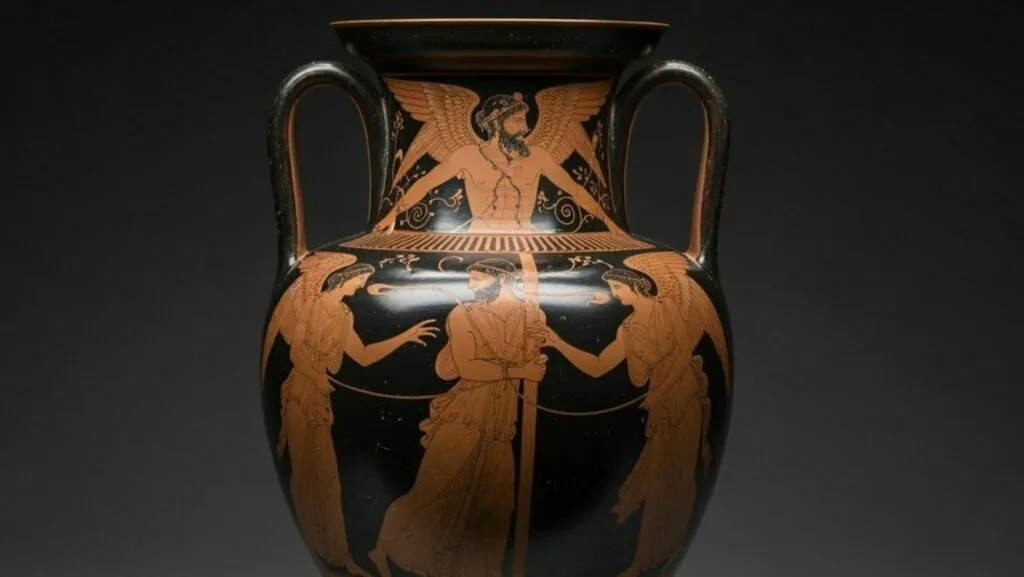
Early pottery was built by hand using basic methods like coiling, pinching, and making flat slabs. These helped people make pots for storing food, cooking, and carrying water. Later, people learned to use the pottery wheel, which made it easier to make pots that were round and even.
Today’s potters still prepare clay, shape it, dry it, and fire it, just like people did long ago, building a connection to the past.
Pottery as a Part of Culture
Pottery has always connected to big moments in life and shown what people cared about. Its decorations show us what people believed and valued. In ancient times, people often put special pottery in graves to mark important moments or to go with someone into the afterlife.
These graves often contain pots that are fancier than everyday ones, showing they were made for special occasions.
Changes in pottery style help historians understand where people lived, how people moved, and what goods they traded. When one style or pattern caught on, it might keep showing up for generations. Because of this, pieces from the past still influence how things are made now, giving us a living history lesson through clay.
When Did Pottery Begin? Looking Back to Its Roots
The First Pots by Early People
Pottery goes back before writing was invented, with some of the oldest pieces made about 29,000 BCE in ancient Japan. The first clay pots from the Jōmon period were plain and sometimes had simple patterns. These sturdy pots were made for storing food and water, which helped early groups settle and build communities.
People probably discovered pottery by chance. After a fire, they may have noticed that clay near the flames became hard. This small event changed things for humans, as they now had a way to make containers that would not rot or leak-unlike ones made from wood or animal skins.
How the Pottery Wheel Changed Everything
For many years, all pottery was made by hand. Around 3,000 BCE in Mesopotamia, people created the pottery wheel, which made it much easier to form rounded, even vessels. This tool sped up work and opened up more artistic options. It also made it easier to make many matching items quickly.
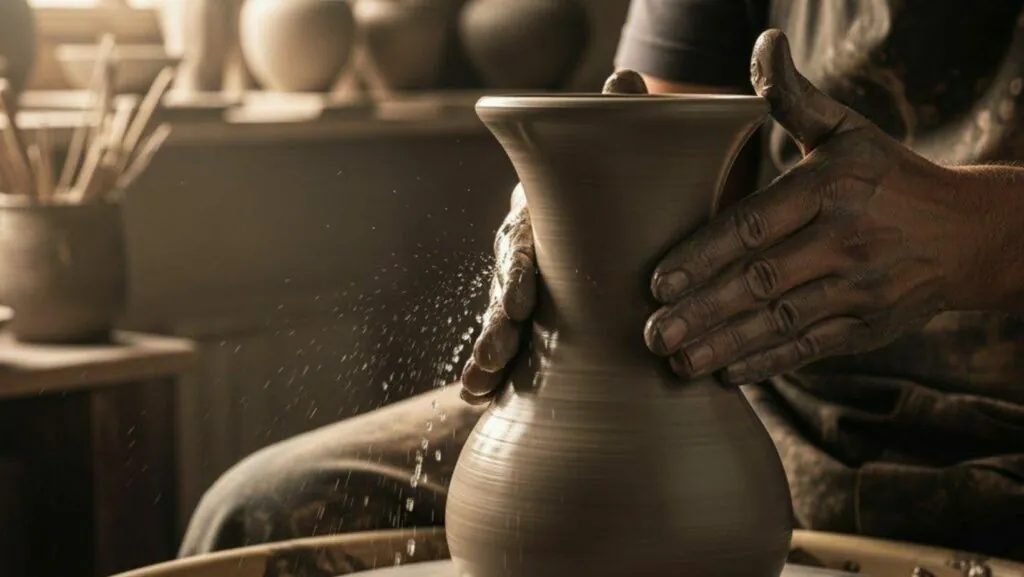
The pottery wheel spread to other cultures. It didn’t always stick around, though-after the Romans, the wheel disappeared from places like England, only coming back centuries later. These changes show how pottery styles often moved with people and trade, and how outside events shaped what skills and tools people kept using.
How Pottery Helped Build Civilizations
Pottery in Ancient Egypt: More Than Everyday Tools
Pottery was very important in Ancient Egypt, both for daily chores and for rituals. Egyptians made many pots for cooking, storing, and especially for funerals. The designs on these pots, which often showed gods, rulers, or moments from life, give us a picture of how they lived and what they believed. Funerary pots were included in tombs for use in the afterlife, again showing their importance.
Pots in Egypt ranged from simple, rough ones for everyday use, to fancy, decorated ones found in rich graves. These differences help experts learn about the society, how people traded, and their beliefs about life after death.
Greek Pots for Art and Stories
Greek ceramics stand out for their skill and for the stories they told. The Greeks painted their pottery with black and red figures, showing myths, daily routines, and games. These pictures let us see what life was like and what stories people told each other.
Greek pottery changed over time, moving from simple shapes and patterns to more detailed pictures. Famous artists, such as the Swing Painter and the Euphronios Painter, led these changes, adding more natural movement and details to their work. These pots are valued today both for their use in ancient times and as works of art.
China and the Invention of Porcelain
China has a very old pottery tradition and is known for inventing fine porcelain. This see-through, delicate ceramic was highly prized and copied around the world. Even when European factories like Meissen learned to make it, China stayed the main source for luxury porcelain for a long time.
Chinese pottery also includes detailed designs, like dragons and flowers, that each mean something special. Besides porcelain, Chinese artists made earthenware and stoneware, using many kinds of glazes and firing techniques. Their skills led to a big variety of pots, from teacups to statue figures, influencing pottery in many countries.
Time-Honored Pottery Methods Passed Down Generations
How Pots Are Made: Hand-Building, Throwing, and Shaping
People have made pottery using the same basic ways for centuries. The oldest is hand-building, with these three main methods:
- Pinching: Squeezing and shaping the clay using fingers.
- Coiling: Rolling clay into long tubes and stacking them up.
- Slab Building: Cutting flat pieces of clay to shape and join.
The pottery wheel changed things by letting potters quickly spin and shape clay into round pots. Other methods, like pressing clay into molds or pouring clay slip into forms, let people make repeating shapes or add details more easily.
Decorating, Glazing, and Firing
When a pot is half-dry, artists can smooth, carve, or add designs. People have decorated pots in many ways, including scratching lines, painting with minerals, or stamping. Glazing, which coats the clay with a glassy layer, helps keep water in or out and adds colors and shine. Glazes come in different finishes and colors.
The last big step is firing. This bakes the clay at very high heat, making it permanent and sometimes turning the glaze into a glassy shell. Early firing was done in open fires, but later people built kilns that could reach higher temperatures. The way a pot is fired changes its color, texture, and toughness, and each type of clay or glaze needs certain temperatures and oxygen levels to work well.
| Technique | Description | Main Uses |
| Pinching | Shaping with fingers by squeezing | Small bowls, cups |
| Coiling | Stacking rolls of clay | Large pots, jars |
| Slab | Joining flat sheets of clay | Boxes, tiles |
| Throwing | Forming clay on a spinning wheel | Round, even pots |
| Molding | Pressing or pouring clay into molds | Detailed or repeated shapes |
Pottery’s Growth through the Renaissance and Industrial Times
New Porcelain and Glazes
The Renaissance saw pottery become more artistic. Makers tried out new glazes, shapes, and styles, so pottery became something rich people prized. The biggest leap was finding ways to make fine porcelain. Although it started in China, European makers like those at Meissen in Germany finally figured out how to do it, spreading fancy porcelain pieces across Europe.
At this time, potters created new colors and complex patterns, turning everyday objects into artwork. This changed how people saw pottery-not just as practical items, but as symbols of style and taste. The careful work and creativity of this era set the stage for pottery being seen as true art.
Pottery in Factories: Mass Production’s Impact
When factories and machines began to appear in the 1700s and 1800s, pottery started being made much faster and in bigger numbers. Costs dropped and more people could own nice dishes or pots. But, as machines made more pieces that all looked alike, some people worried about losing the special touch of handmade pottery.
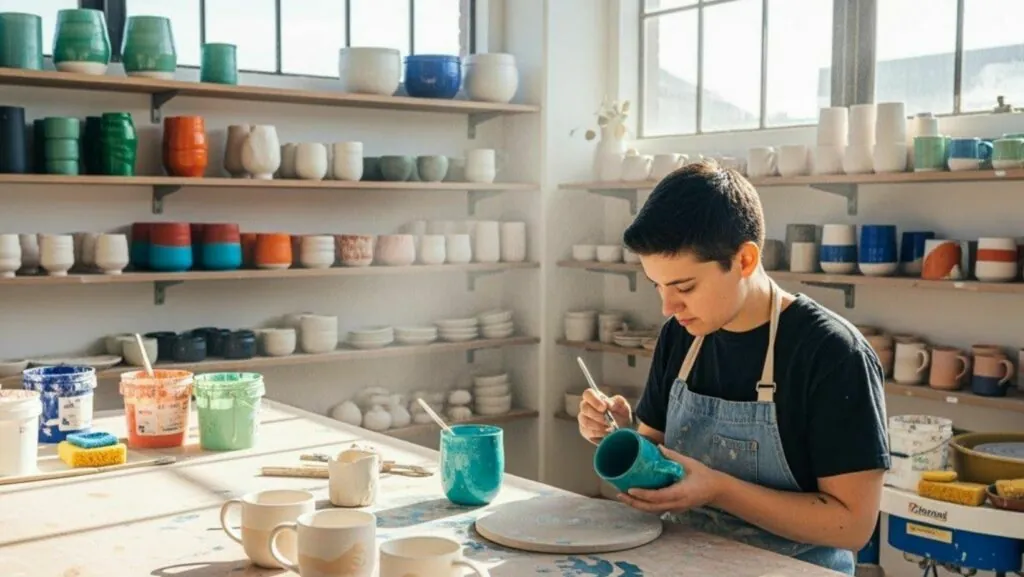
Even during this period, some artists focused on the value of handcrafting. The Arts and Crafts movement, for example, wanted to bring back the beauty of hand-made goods, so making pottery remained an important art. This debate between handmade and factory-made continues today, giving people many choices in the pottery they buy and use.
Why Pottery Still Matters
Useful Objects and the Rise of Ceramic Art
Pottery is important because it is practical and artistic. From the start, pots, bowls, and jars helped people cook, store food, and carry water. Even plain pots often had simple marks or designs, showing that people always wanted their tools to have some beauty too.
As skills grew, so did the appearance of these items. Pots that once were plain became detailed and decorated. What began as a way to solve everyday problems turned into a form of art. Today, pottery moves between both ideas, being both useful and creative at the same time.
Pottery Tells Human Stories
Pots, vases, and plates from the past help us learn stories about the people who made them. Decorations on pottery from Greece picture myths, Egyptian jars hint at their beliefs about the afterlife, and Chinese bowls show changes in fashion and leadership. Every piece is like a small record of someone’s life and times.
Shaping a pot is also its own kind of story-the potter’s choices leave marks that tell us about their skills and ideas. We can still sense the touch of someone who lived thousands of years ago. This means pottery is more than just an object; it connects us to people from history, making their world real to us today.
Pottery Today: Its Modern Comeback
Pottery as a Modern Hobby and Art
Recently, pottery has made a strong comeback as both a fun hobby and a respected art. More people want to make things by hand, express themselves, and find relaxing activities. Pottery classes and studios are easier to find, making it possible for anyone-young or old, experienced or new-to give pottery a try.
Pottery is popular for groups too. Activities like group classes or pottery-making parties are common ways for friends or couples to have a creative, hands-on experience together. With the help of online guides and local studios, more people can enjoy crafting something from start to finish.
Mixing Old Traditions with New Designs
One of the best things about pottery now is how artists mix the old ways with new ideas. Many potters use designs and shapes from the past but combine them with modern colors and styles. This fresh take keeps pottery interesting and helps the craft keep changing without losing touch with its roots.
Modern pottery can range from simple, classic shapes inspired by ancient Japan to bright, bold sculptures. This blend helps pottery stay popular, showing that it can change and stay interesting no matter how many years pass. Making pottery is still a hands-on, creative act that connects the past to the present in a direct, very real way.

